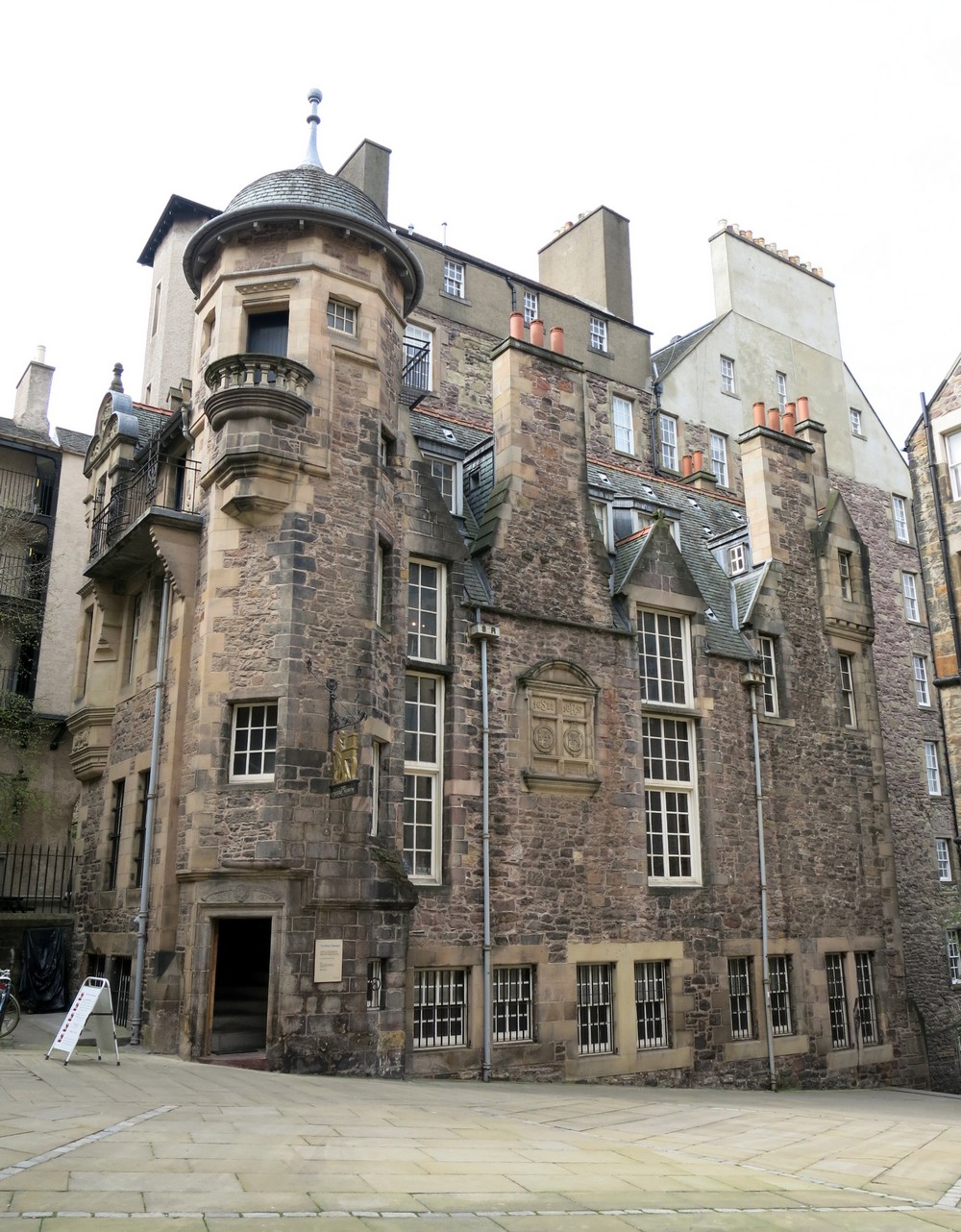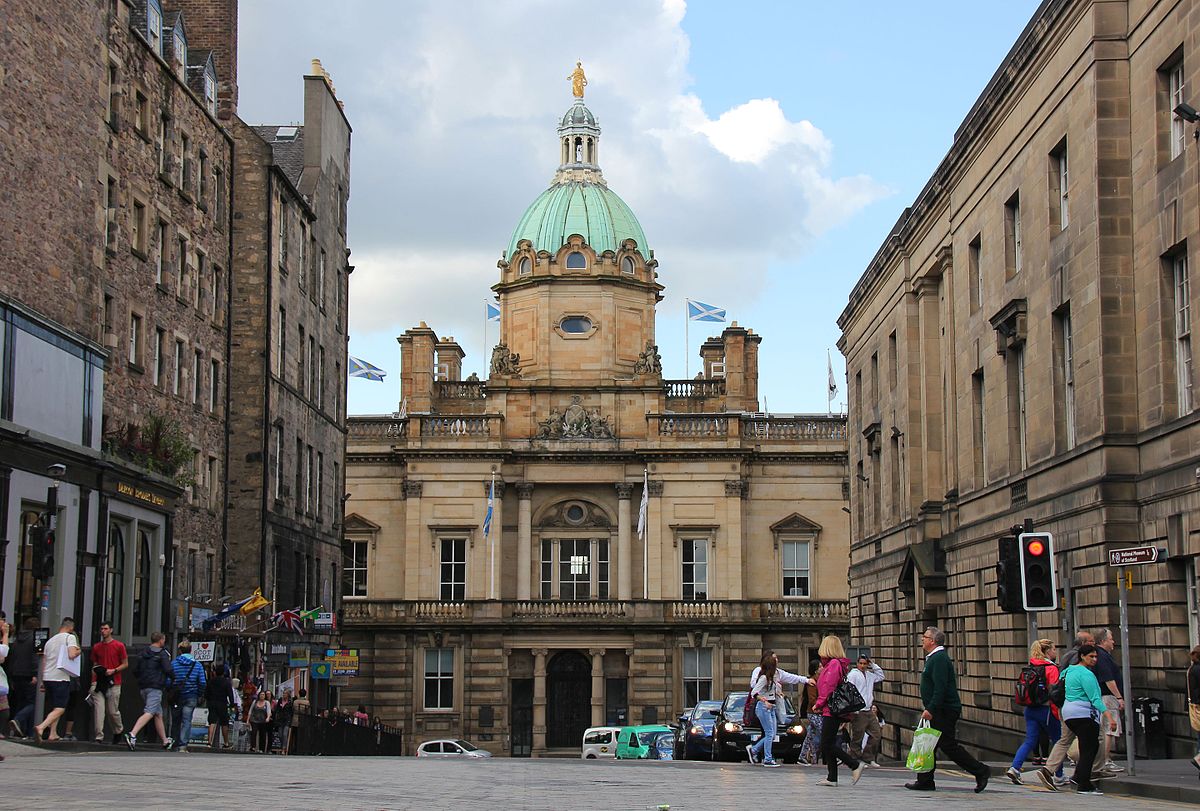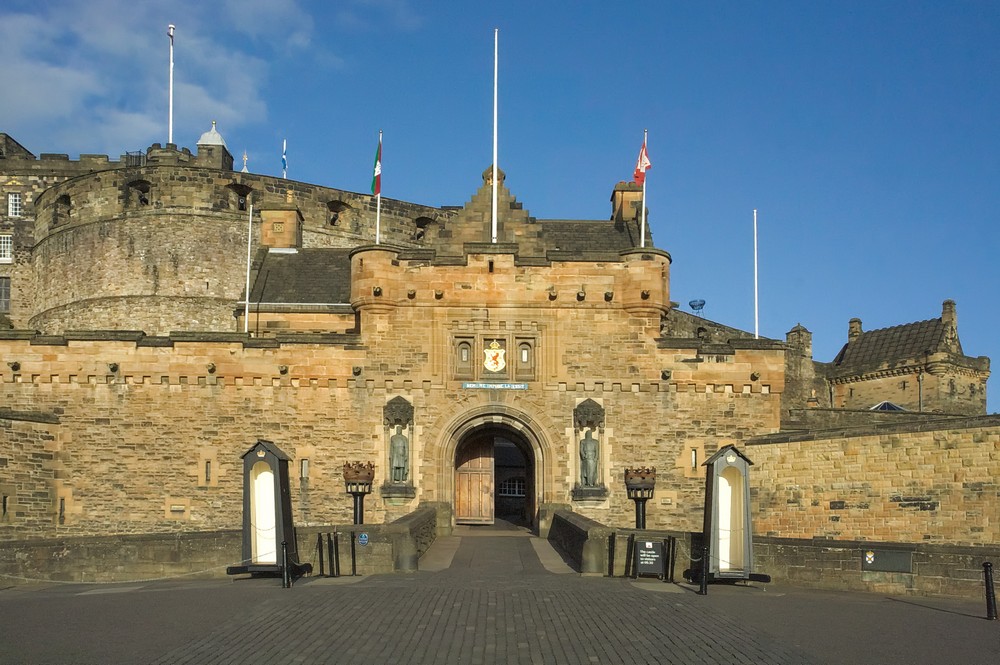
Edinburgh Castle, Gate entrance
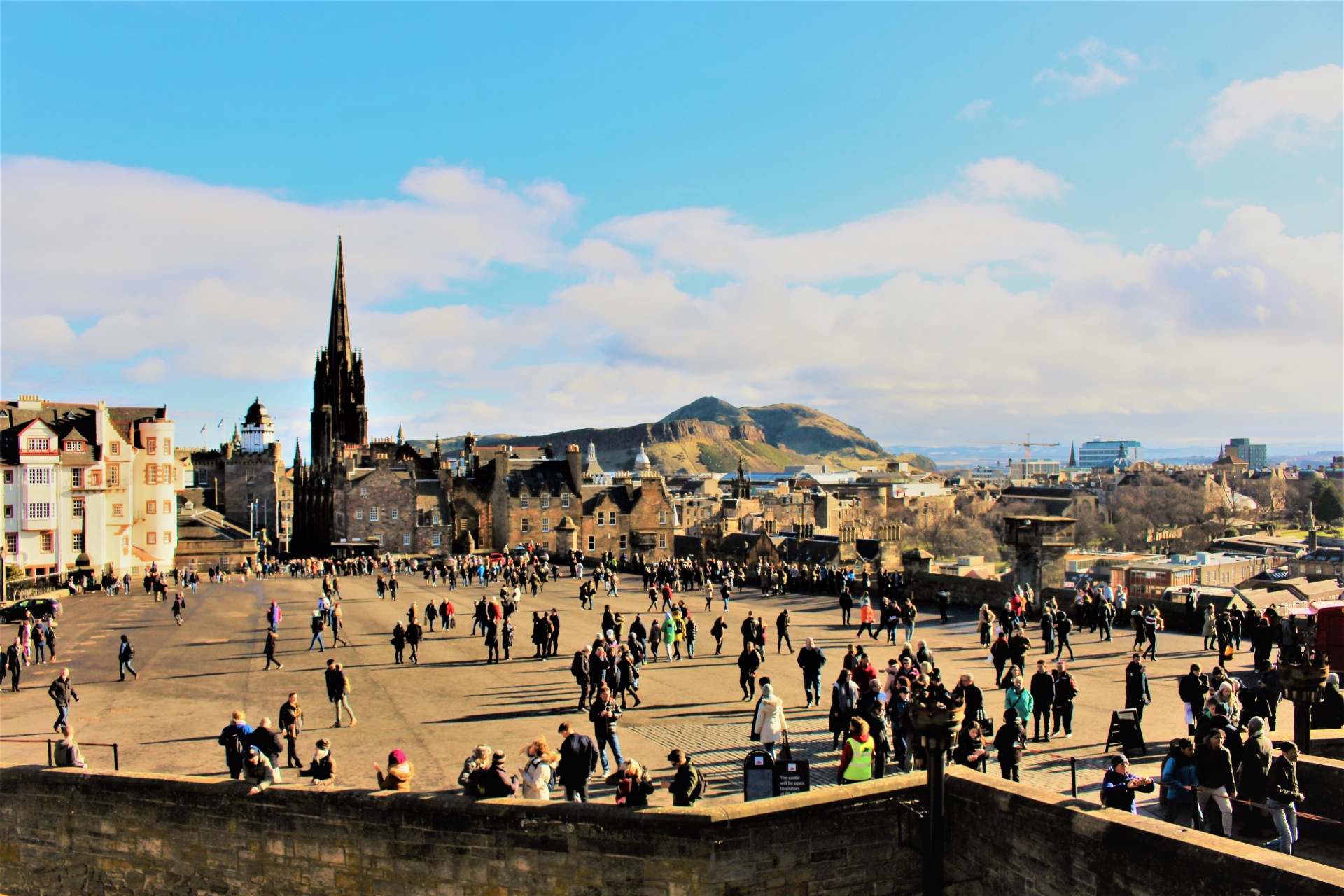
Edinburgh Castle Esplanade
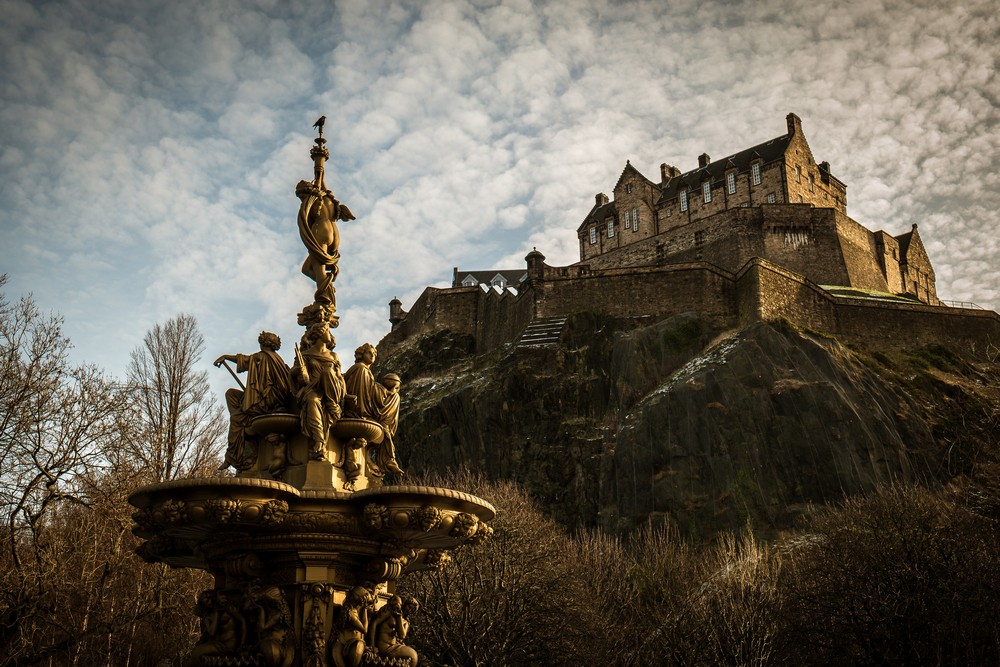
Ross Fountain and Castle
Alasdair via Flickr (CC-BY)
Edinburgh Castle Esplanade
What more secure location could there be than on the top of this extinct volcanic rock, greatly limiting accessibility and commanding excellent views over the surrounding lands.
Traces of bronze age and iron age settlements have been uncovered at the site. Since then, fortresses have been constructed and used for defensive purposes throughout the middle ages and until 1745, when the last military action took place during the second Jacobite rising. There is debate about any causal relationship between the rebellion and the Scottish Enlightenment, but it is a fact that the city's cultural and economic life underwent explosive growth thereafter, albeit on the basis of a strong educational climate, fostered through Scotland's five universities with their history of liberal thinking and social inclusiveness.
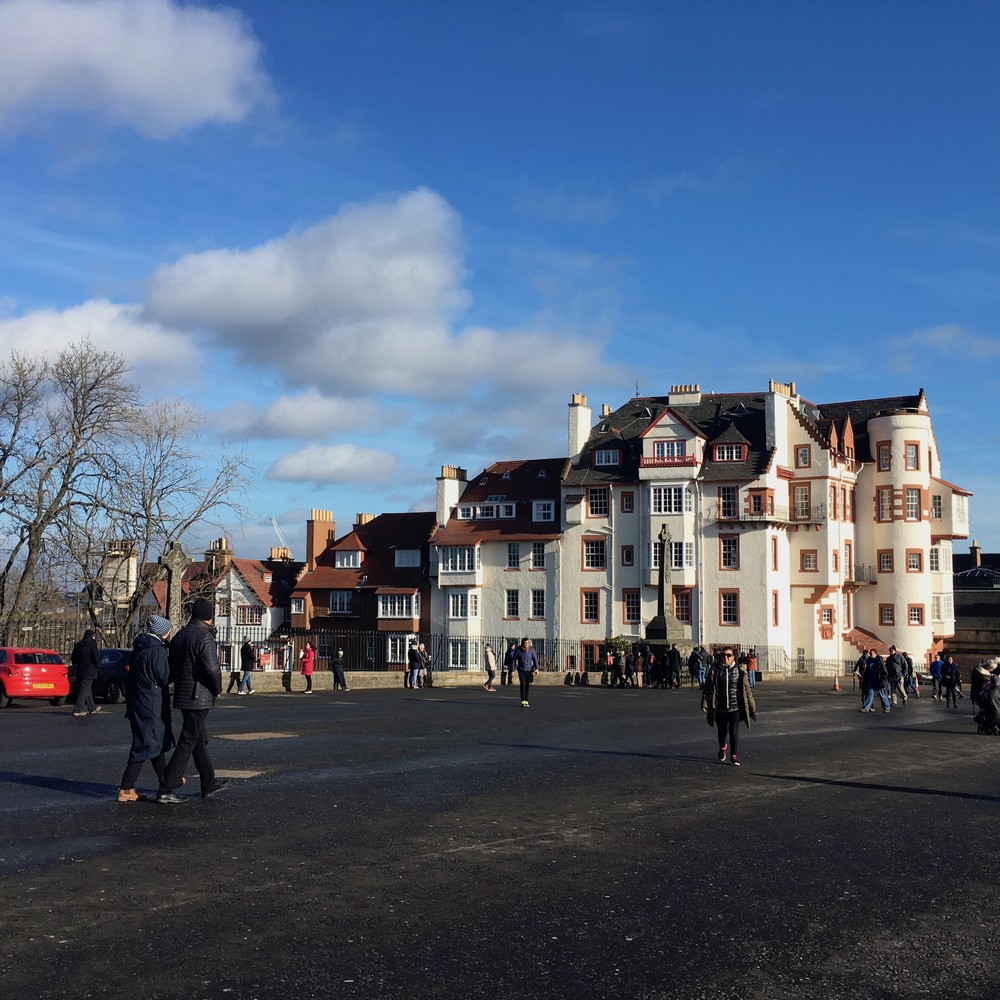
Ramsay's lodge
Author's own photo
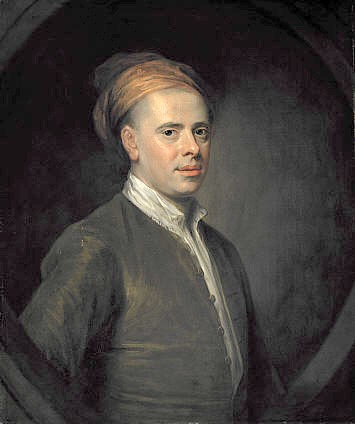
Allan Ramsay
Photograph by William Aikman - National Galleries of Scotland, 10 March 2007.
Public Domain, <span class="wikiexternallink" xmlns="http://www.w3.org/1999/xhtml"><a class="wiki" href="https://commons.wikimedia.org/w/index.php?curid=1765708"><span class="wikigeneratedlinkcontent">https://commons.wikimedia.org/w/index.php?curid=1765708</span></a></span>
Look eastwards from the esplanade and you see the start of the Royal Mile, with its fantastical collection of medieval "Skyscrapers", narrow closes and enchanting courtyards, leading down the entire length of the tail of the volcano to its base where Holyrood Palace sits. Remarkably the Edinburgh Enlightenment fomented here, beginning at a time when the city was renowned for its poverty, squalor and drunkenness. Look northwards, however, and you have a view over the neo-classical symmetry of the New Town, a Georgian masterpiece built between 1767 and 1850, where the Enlightenment reached its zenith.
One of the earliest impresarios of the enlightenment, Allan Ramsay (1686 – 1758) lived in the eclectic arrangement of houses at the foot of the castle esplanade, developed over many years beginning in 1733, when Ramsay designed and had constructed Ramsay Lodge, an octagonal building located on the north side of the complex, popularly known as the "Goose-pie" house.
Ramsay was distinguished by his promotion of poetry in the vernacular or Scots language, a tradition taken up by Robert Fergusson and later immortalized by Scotland's national poet, Robert Burns.
Leave the esplanade of the castle and walk down the Royal Mile: after less than 100m you will see on your right the entrance to Boswell's Court.
James Boswell and Samuel Johnson Plaque
As we commence our walk down the High Street, that being the uppermost section of the Royal Mile, look to your right at the Witchery Restaurant and you will see a brass plaque commemorating the meeting place of Samuel Johnson and his esteemed biographer, James Boswell (1740 – 1795)
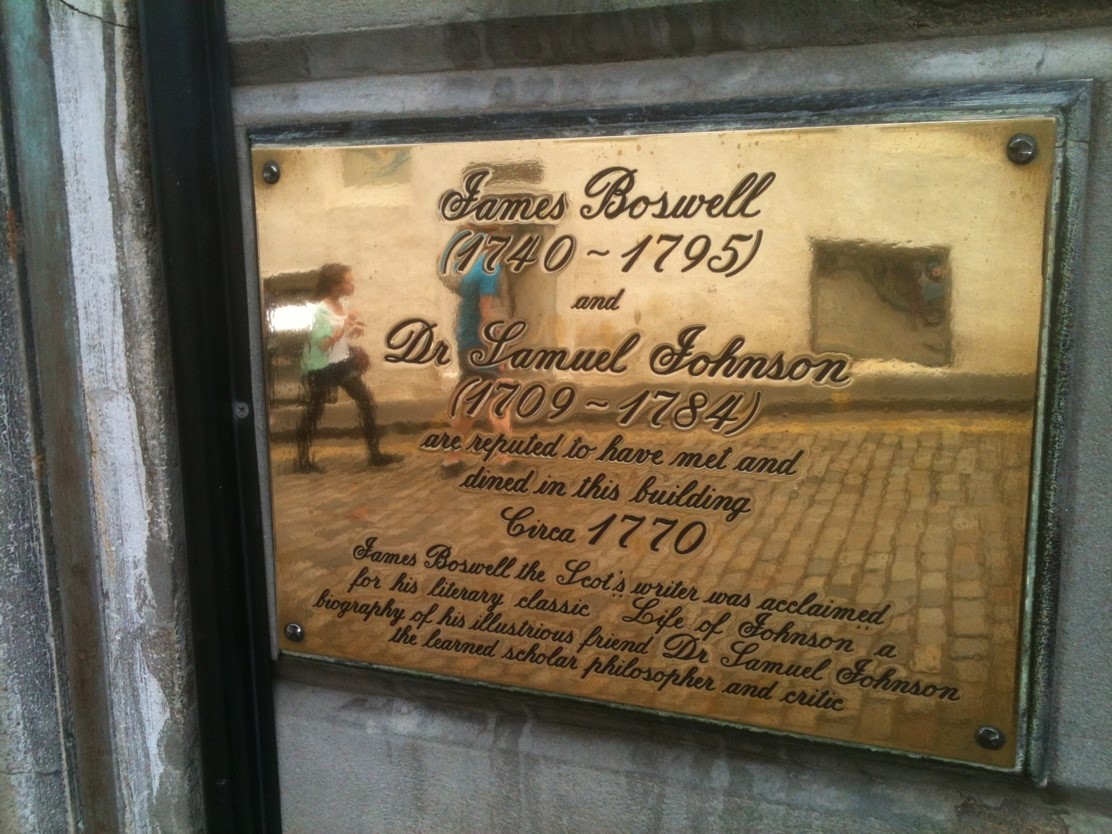
Boswell and Johnson plaque
Author's own photo
Many have deemed the Life of Samuel Johnson the greatest biography in the English language. The first conversation between Johnson and Boswell is quoted in the Life of Samuel Johnson as follows:
"Boswell: Mr. Johnson, I do indeed come from Scotland, but I cannot help it.
Johnson: That, Sir, I find, is what a very great many of your countrymen cannot help."
Boswell was also honored to be able to interview the Scottish Enlightenment philosopher, David Hume, on his death bed, when Hume professed his atheism and branded religious people as "rascals." (from An Account of my last interview with David Hume, Esq. Partly recorded in my Journal, partly enlarged from my memory, 3 March 1777 by James Boswell).
